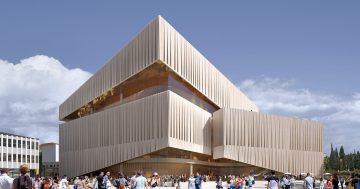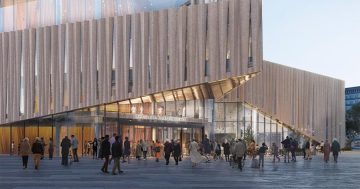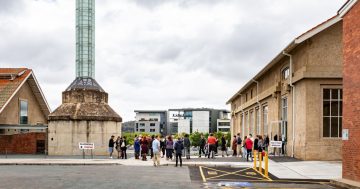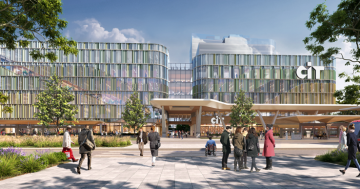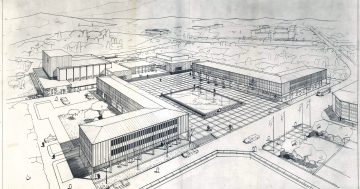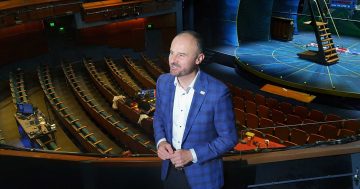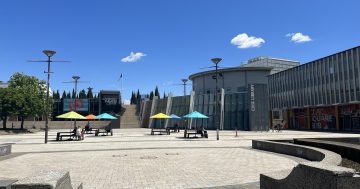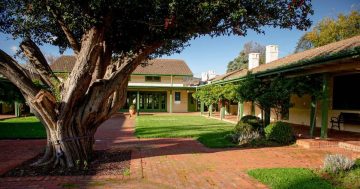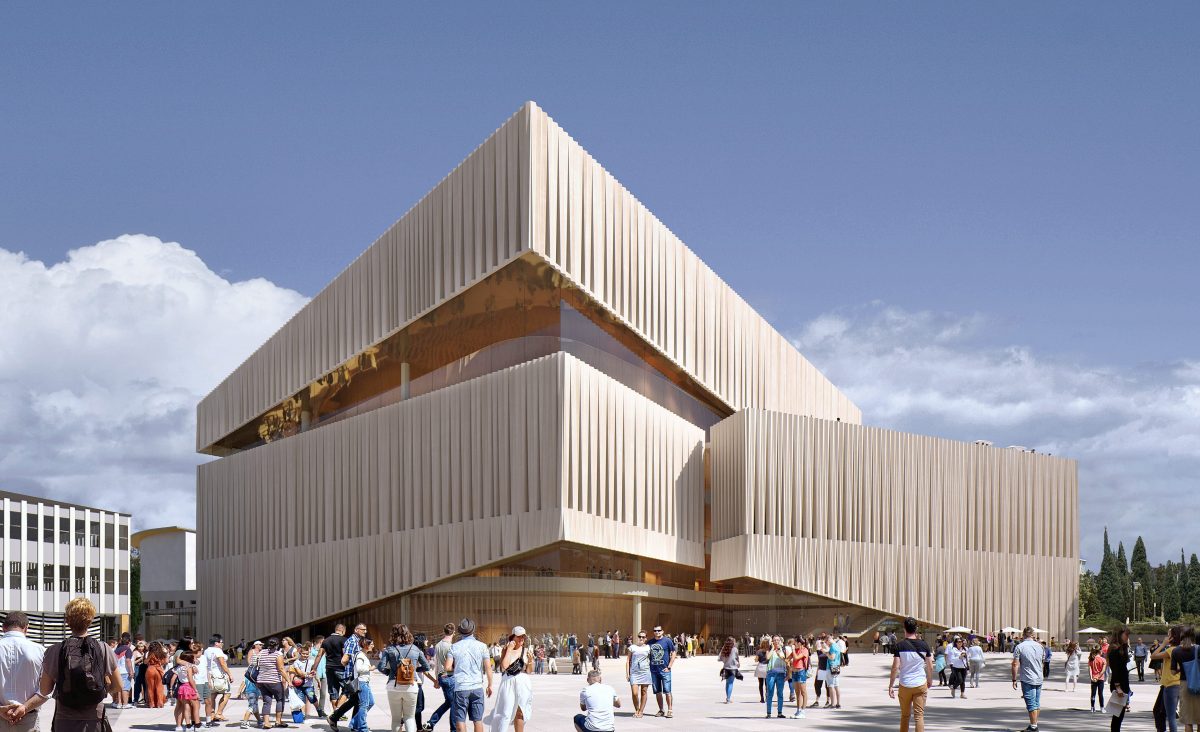
An early concept design of the proposed new Canberra Theatre. Images: ACT Government.
The Canberra Theatre Centre redevelopment has taken a giant leap forward with the announcement of the consortium selected to create designs for the project, which will be the centrepiece of a rejuvenated cultural precinct in the city.
The ACT Government has today named Australian firm Architectus, Danish architects Henning Larsen and international theatre designers ARUP as the design partner consortium after a six-month selection process.
The consortium was one of three shortlisted in November. Its winning tender included early preliminary designs depicting a new theatre building with a bold and sophisticated façade treatment that references the formal modernist and brutalist landmarks of Canberra.
Architectus is responsible for major projects, including the Queensland Gallery of Modern Art (GOMA), the redevelopment of the heritage-listed State Library Victoria and the Sydney Modern Project nearing completion at the Art Gallery of NSW.
Henning Larsen are the lead designers for the Harpa Concert Hall in Reykjavik, Iceland, and the Royal Danish Opera in Copenhagen.
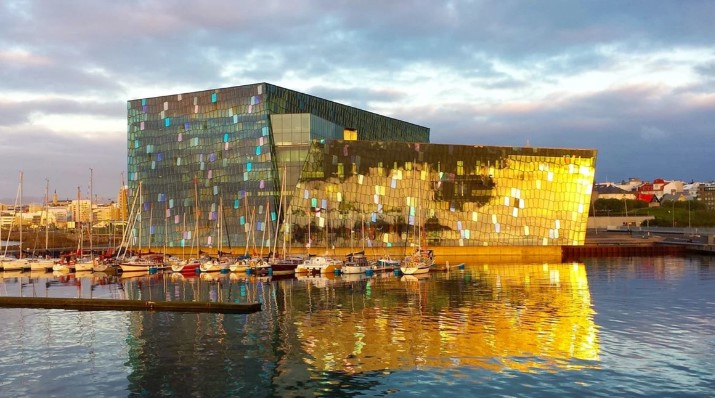
Harpa Concert Hall and Conference Centre in Reykjavik. Photo: Harpa.
The government said the internationally recognised architecture firms demonstrated they had the best plan to deliver a theatre centre that integrated the existing landscape and future vision for a thriving Canberra Civic and Cultural District.
It said the decision was supported by the fact that the team that forms the consortium is made up of local, national and international specialists in innovative theatre and architectural design.
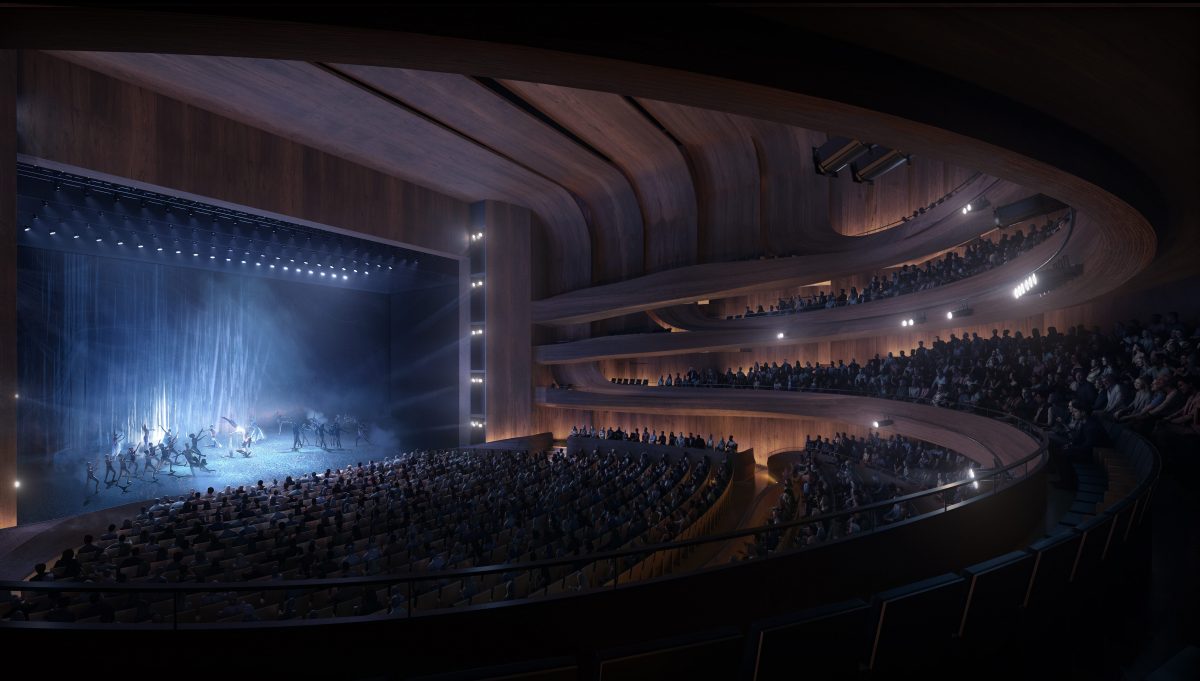
What the new 2000-seat lyric theatre could look like. It would be able to stage major productions.
The design partner would make the most of local insights by establishing a local office and partnering with Canberra’s industry leaders.
Chief Minister Andrew Barr said the redeveloped Theatre Centre, including a new 2000-seat lyric theatre with a much bigger stage than the current one, would put Canberra on the arts map and ensure the city could host the top-tier productions it currently misses out on, including contemporary music, comedy, circus, musicals, ballet and opera.
He said the current theatre would be upgraded with an option for a flat floor setup so Canberra could attract more mid-sized concerts.
“These venues, new and refurbished, will be highly utilised by local, national and international performances,” he said. “There will be hundreds of nights of performance each year. This will boost our hospitality and tourism industries.”
He said the winning entry showed a respect for Canberra’s architectural history but was also rooted in the present.
“If you take a look at the indicative images that we’re releasing today gives you a sense of a theatre that stands out within its landscape, that is, of course sympathetic to our city’s architectural history but is also contemporary and meets the needs of our growing city,” Mr Barr said.
He said several hundreds of millions of dollars had been set aside for the project but he would also approach the Commonwealth to contribute to the project.
“It’s not necessary for them to invest for the project to go ahead, but I think it does present an opportunity for them to partner with the Territory government in creating a national level cultural precinct for the national capital,” he said.
Construction was expected to begin mid-decade after designs were finalised and be completed by 2030.
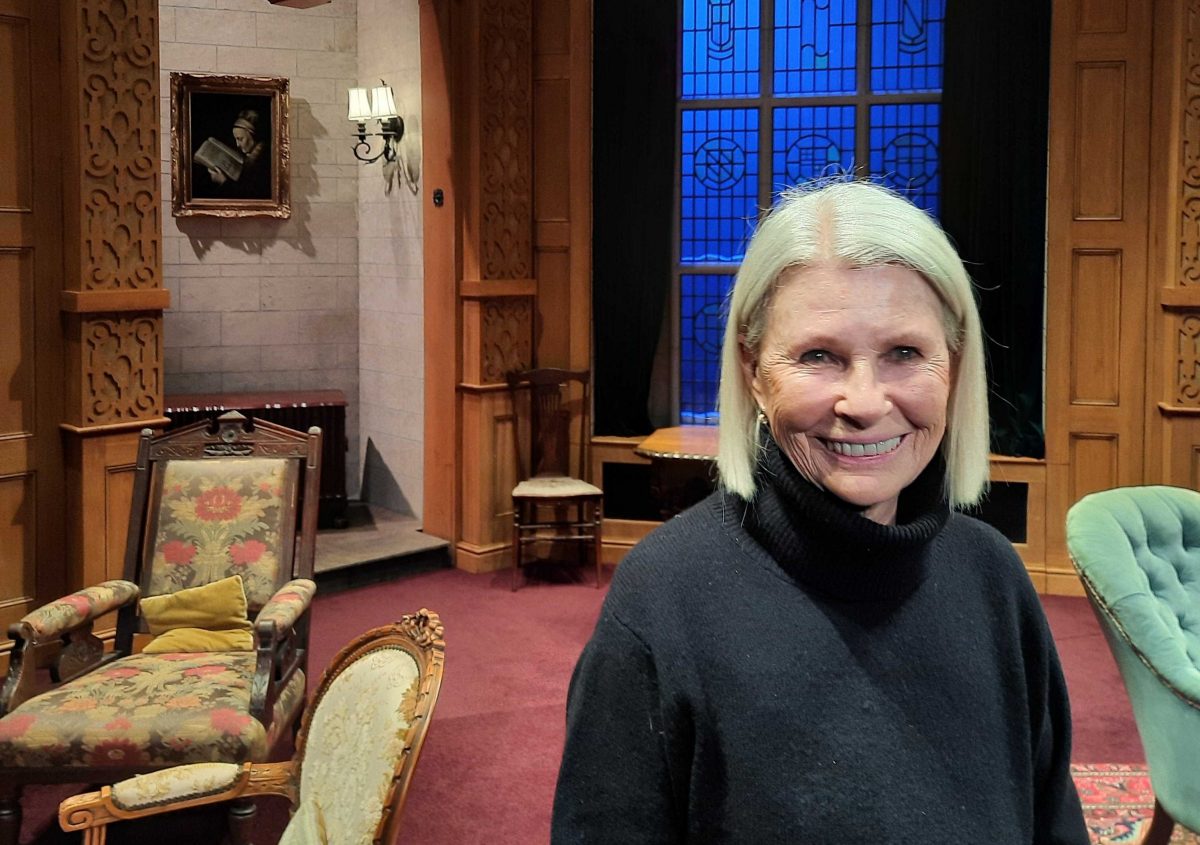
Robyn Nevin on The Mousetrap set: new theatre was not just good for Canberra but also good for the country. Photo: Ian Bushnell
Arts Minister Tara Cheyne said the redeveloped Canberra Theatre Centre would be a city-shaping project that would bring us closer to the government’s vision for Canberra to be recognised as Australia’s arts capital.
“The design partner has understood and shares our vision for a world-class venue with architectural excellence befitting its location as the heart of the planned Canberra Civic and Cultural District,” she said.
“Our vision for the renewed Canberra Theatre Centre will support the growth of Canberra’s live performance sector by creating spaces for artists and arts workers to develop, rehearse and perform productions.”
Ms Cheyne said the government wanted Canberra’s performing artists to be partners in the project, announcing that it was inviting expressions of interest for its performing arts reference group to advise government on the sector’s priorities.
Architectus principal and sector leader, public, Dr Stephen Long, said his firm, together with Henning Larsen and Arup, were honoured to be selected from the impressive line-up of international practices that were shortlisted.
“Our collective will play a key role in fuelling the creative spirit of Canberra by designing a world-class experience for the city’s thriving Canberra Civic and Cultural District,” he said.
“We’ve assembled a team of internationally recognised experts in the design and delivery of inspiring places for arts culture and entertainment.
“For many of us, the project will be a career highlight, creating a theatre that holds its place in the context of Canberra’s ensemble of national culture, arts buildings and environments in Canberra’s civic and cultural district.”
For stage and screen legend Robyn Nevin, in town to direct The Mouse Trap, the better the theater, technically and in terms of of sound and shape, the better the experience for performers and that meant a better experience for the audience.
But a new theatre was not just good for Canberra but also good for the country, she said
“It’s very exciting, because it does impact on the national health of theatre and performing arts, and when politicians give to the arts, it’s a great day for the nation,” Ms Nevin said.
It also meant new work being developed in the nation’s capital, “and that can be shared with the rest of the country and the rest of the world”.
The government said the design partner would now commence the design process with insights from theatre users and other technical experts.
Stakeholders and the community would also be able to influence the project, with consultation planned for later this year.












